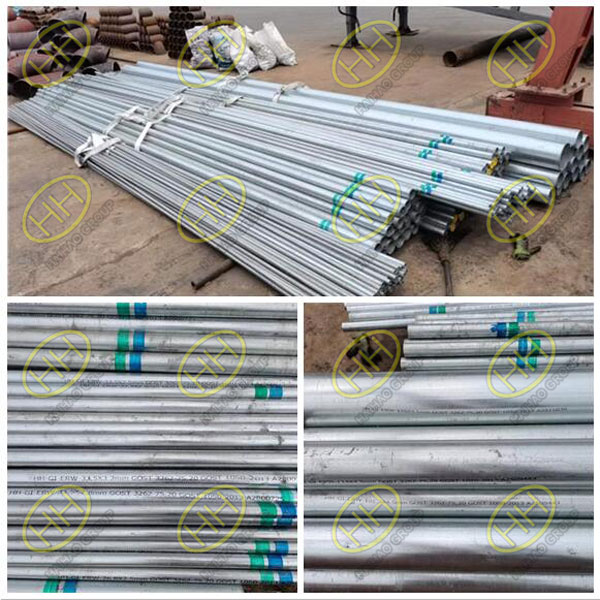Most of the orders in Bangladesh are seamless and ERW pipes. In one part of the ERW pipe, the customer has the requirement of galvanizing.
Galvanizing can increase the corrosion resistance of steel pipes, prolong the service life, and have a wide range of uses. Galvanized steel pipes are divided into cold galvanized steel pipes and hot-dip galvanized steel pipes, but cold galvanizing has been widely banned, while hot-dip galvanizing is advocated by the state for temporary use. In response to national policies, the treatment of this batch of ERW pipes is hot-dip galvanizing. Hot-dip galvanized steel pipes are widely used in construction, machinery, coal mining, chemical industry, electric power and other manufacturing industries. The hot-dip galvanized steel pipes in this order are used in the manufacture of Bangladesh nuclear power plants.

Galvanized pipes
Hot-dip galvanized pipe is to make the molten metal react with the iron matrix to produce an alloy layer, so that the matrix and the coating are combined. The hot-dip galvanized steel pipe substrate undergoes complex physical and chemical reactions with the molten bath to form a corrosion-resistant zinc-iron alloy layer with a tight structure. The alloy layer is integrated with the pure zinc layer and the steel pipe substrate, so it has strong corrosion resistance. Hot-dip galvanizing has the advantages of uniform coating, strong adhesion and long service life.
The essence of cold galvanized pipe is electro-galvanizing, the amount of galvanizing is very small, and the zinc layer is also thin. Cold galvanizing is also easier to rust, while hot galvanizing is less prone to rusting.
This batch of hot-dip galvanized steel pipes is smaller in size, and has now completed and passed the third-party inspection by SGS, and SGS will also issue corresponding reports and certificates. Hebei Haihao Group welcomes new and old customers with galvanizing needs to come to consult and place orders!







